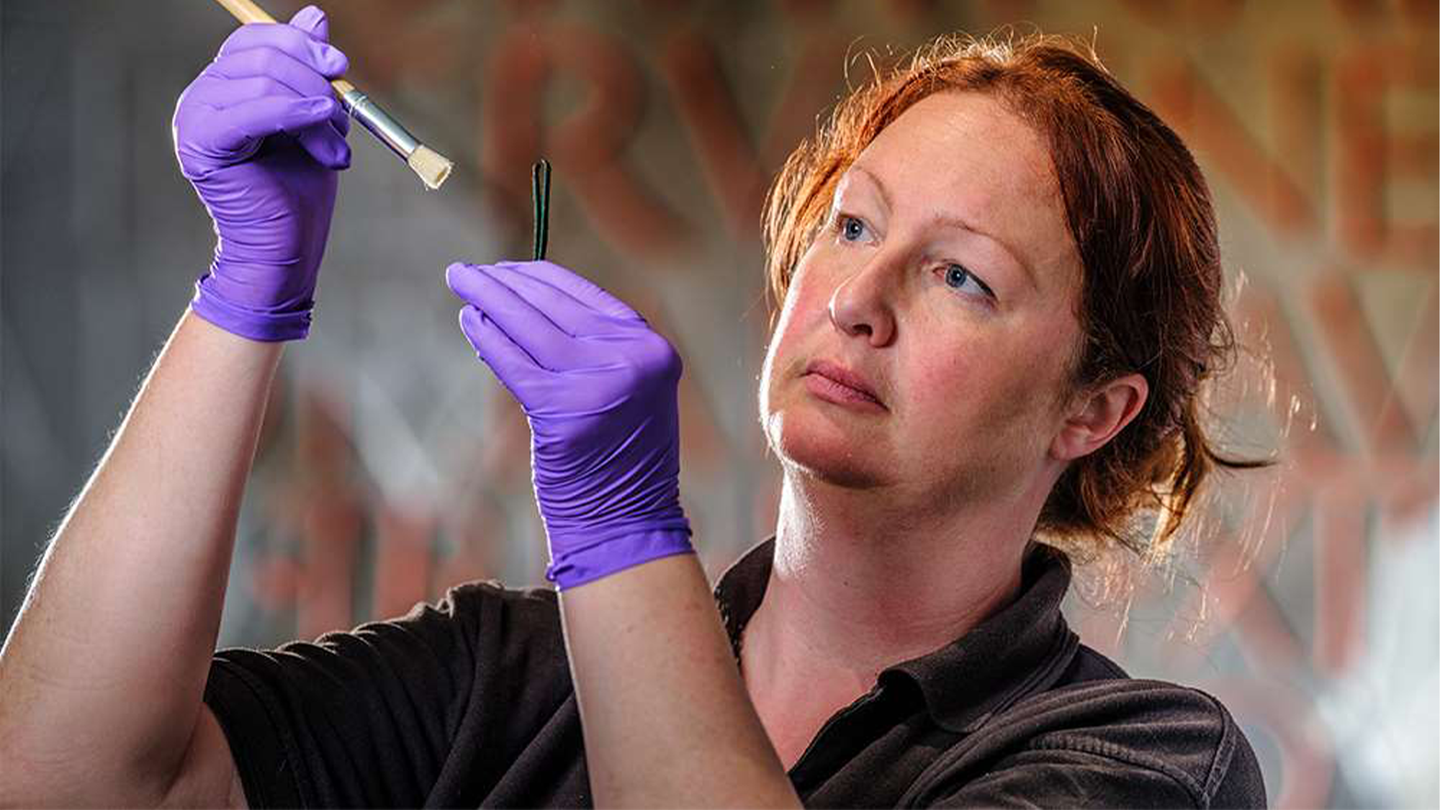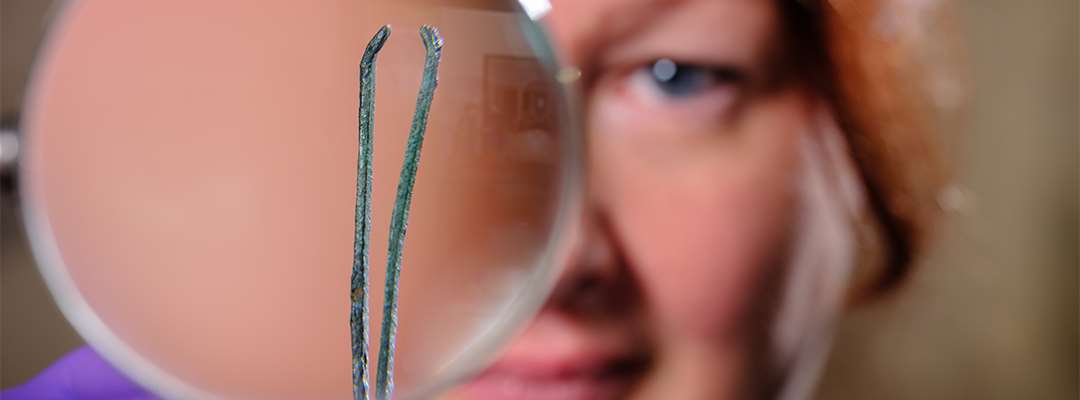
Ancient Romans were apparently staunch believers that “pain is beauty,” especially when body hair removal is involved. A collection of tweezers once used to remove armpit hair are amidst over 400 new artifacts on display at a Wroxeter Roman City in Shropshire, England.
[Related: This ancient Roman villa was equipped with wine fountains.]
Some of the objects related to both cleanliness and beauty in Roman times include a skin scraper called a strigil, bottles of perfume, jewelry made from jet and bone, amulets to ward off evil, and make-up applicators.
“At Wroxeter alone we have discovered over 50 pairs of tweezers, one of the largest collections of this item in Britain, indicating that it was a popular accessory! The advantage of the tweezer was that it was safe, simple and cheap, but unfortunately not pain free,” site curator Cameron Moffett said in a statement.
Wroxeter Roman City was once known as Viroconium Cornoviorum, which was a thriving urban spot that was once about the size of the ill-fated Pompeii, Italy during the Flavian dynasty. It was once the fourth largest town in Roman Britain and was founded as a legionary fortress in the mid-first century. It was officially established as a town in the 90s CE and was inhabited until the fifth century.
Various excavations of the site have uncovered a forum where laws were made, market, a multipurpose office, community center, and shopping center, and a bath house. In the bath house, Roman Britons would have bathed and socialized, as Romans generally cared a great deal about cleanliness and public image.

Roman cities throughout their empire had toilets in addition to these communal baths, and many Romans owned personal cleaning kits. These kits included an ear scoop for wax removal, a nail cleaner, and tweezers. Roman tweezers were used for way more than crafting the perfect eyebrow arch. They were used on all unwanted body hair, which sounds a bit like its own form of torture, and was usually performed by slaves, according to English Heritage, a charitable organization that oversees over 400 historic sites in England.
“It may come as a surprise to some that in Roman Britain the removal of body hair was as common with men as it was with women. Particularly for sports like wrestling, there was a social expectation that men engaging in exercise that required minimal clothing would have prepared themselves by removing all their visible body hair,” said Moffett. “It’s interesting to see this vogue for the removal of body hair around again after millennia, for everyone, although luckily modern methods are slightly less excruciating!”
[Related: Scientists think they found a 2,000-year-old dildo in ancient Roman ruins.]
To help set them apart from “barbarians,” Roman Britons preferred a cleanly shaved face on men. Hair plucking was so painful that Roman author and politician Seneca once wrote a letter complaining about the noise coming from from the public baths, noting “the skinny armpit hair-plucker whose cries are shrill, so as to draw people’s attention, and never stop, except when he is doing his job and making someone else shriek for him.”
For women, removing hair was often the perception of beauty. “There are many, many written sources including Pliny and Ovid,” Moffett told The Guardian. “They are all writing about how you will need to keep on top of the body hair and you know, gosh, no man is going to be interested in you if you’ve got armpit hair.”
A reconstructed Roman town house stands among the city’s surviving ruins, and many of the objects discovered at Wroxeter depict the daily lives of those who once lived there.
The post The Roman Britons cared a lot about hair removal, and it shows in artifacts appeared first on Popular Science.
Articles may contain affiliate links which enable us to share in the revenue of any purchases made.
from | Popular Science https://ift.tt/AWBw98U



0 Comments